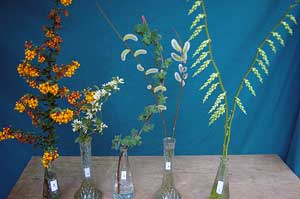March Color Appears at the Washington Park Arboretum (Part II)
1) Berberis darwinii
- Darwin’s barberry is one of the showiest of the genus with striking orange flowers opening from red buds.
- Unlike most other Berberis (including our native species), Berberis darwinii produce sweet fruit in the fall.
- A large mass can be found in the Chilean entry garden in Pacific Connections, as well as the Chilean hillside along Lake Washington Boulevard.
2) Osmanthus x burkwoodii
- A hybrid of O. decorus and O. delavayi, Osmanthus x burkwoodii produces the very fragrant flowers typical of the genus.
- Several large specimens can be found along Foster Island Road.
3) Ribes malvaceum var. viridifolium ‘Ortega Beauty’
- Though similar to Ribes sanguineum, the Chaparral currant has a more open form and the leaves are particularly resinous – (touch and smell the leaves).
- Many cultivars of R. sanguineum and R. malvaceum can be found in the Cascadia area of Pacific Connections.
4) Salix acutifolia ‘Pendulifolia’
- Located in the twig bed of the Witt Winter Garden, this willow produces catkins that rival rabbits for softness.
5) Stachyurus himalaicus
- This Stachyurus is located along the footpath of the Sino-Himalayan hillside.
- This specimen is a superlative example of both form and flowers for the genus.
- Stachyurus species can also be found in the Woodland and Winter Gardens.
